Miguelito corydoras - Corydoras virginiae
Scientific name: Corydoras virginiae
Common name: Miguelito corydoras
Family: Callichthyidae
Usual size in fish tanks: 4 - 6 cm (1.57 - 2.36 inch)
014
Recommended pH range: 6 - 7.3
Recommended water hardness: 2 - 21°N (35.71 - 375ppm)
0°C 32°F30°C 86°F
Recommended temperature range: 22 - 26 °C (71.6 - 78.8°F)
The way how these fish reproduce: Spawning
Where the species comes from: South America
Temperament to its own species: peaceful
Temperament toward other fish species: peaceful
Usual place in the tank: Bottom levels
Food and Feeding
Corydoras virginiae, commonly known as Miguelito Corydoras, are omnivores that benefit from a varied diet. For their staple diet, use high-quality flake food along with algae wafers or sinking pellets to ensure they receive balanced nutrition. While they primarily graze on these foods, they also enjoy occasional treats. Offer them live or frozen foods like bloodworms, daphnia, or brine shrimp sparingly to provide additional protein. Since Miguelito Corydoras are most active during the evening, it's best to feed them at this time to mimic their natural feeding habits and ensure they have enough time to eat without competition from other fish.
Origin
Miguelito Corydoras are native to the rivers and streams of South America, particularly in Peru. These fish thrive in slow-moving waterways with sandy or fine gravel substrates, which allow them to sift through the bottom in search of food. In their natural habitat, they often inhabit areas with plenty of plant cover and leaf litter, which offer them both food and protection. Understanding their origin helps aquarists replicate similar conditions in the aquarium to keep these fish healthy and stress-free.
Sexing
Sexing Corydoras virginiae can be accomplished by observing their size and shape. Females are generally larger and stockier when viewed from above, especially when they are carrying eggs. Males tend to be slimmer and slightly smaller. During the breeding season, these differences become more noticeable, making it easier to distinguish between the sexes.
Breeding
Breeding Miguelito Corydoras can be a fulfilling and enjoyable endeavor for aquarists. To increase the chances of successful breeding, place a group of these fish in a separate breeding tank with a shallow water level and provide a soft substrate. Condition the fish by offering plenty of live or frozen foods, along with occasional flake meals, to boost their health and readiness for spawning. To trigger spawning, perform partial water changes with cooler water, simulating the rainy season in their natural habitat. It may take a couple of weeks for them to start spawning, so patience is key.
Once the female lays her eggs, they will typically adhere to the glass, plants, or decorations in the tank. The eggs usually hatch within 24-36 hours. When the fry become free-swimming, feed them newly hatched brine shrimp or specialized fry food to ensure healthy growth. Providing ample hiding spots for the fry will also increase their survival rate.
Lifespan
The Miguelito Corydoras can live for approximately 3-5 years in captivity. With proper care, including a nutritious diet, clean water, and a stress-free environment, these catfish can thrive and potentially live even longer.
Tank Setup and Environment
Miguelito Corydoras thrive in well-maintained tanks that closely resemble their natural habitat. A tank of at least 75 liters (20 gallons) is recommended to house a small group of 6 or more specimens. Use a soft substrate like sand or fine gravel to protect their sensitive barbels while they forage at the bottom. Adding plenty of hiding spots using rocks, driftwood, and live plants like Java Fern or Anubias will provide them with shelter and help reduce stress.
Keep the water conditions slightly acidic to neutral, with a temperature range of 22-26°C (72-79°F). Ensure efficient filtration and perform regular water changes to maintain high water quality. Adding some floating plants can help diffuse the lighting, creating a dim environment that these bottom dwellers prefer.
Compatibility and Tank Mates
Miguelito Corydoras are peaceful and hardy fish, making them suitable for community tanks with other non-aggressive species. Ideal tank mates include small tetras, rasboras, and other peaceful fish that occupy different levels of the aquarium. Avoid housing them with overly aggressive or large fish that may bully or outcompete them for food.
Short Description
Miguelito Corydoras, also known as Virginia’s Catfish, are among the hardier species of Corydoras. They are capable of competing with larger tank mates for food and are best kept in groups of at least six. These catfish are known for their peaceful nature and active behavior, particularly during the evening hours. Providing a tank environment with plenty of hiding places, such as rocks and plants, will help them feel secure. With their unique appearance and hardy nature, they make an excellent addition to community aquariums.
Pictures
Bought by aqua-fish.net from jjphoto.dk.
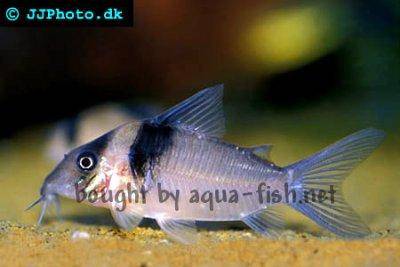



 Aspidoras
Aspidoras  Giant
Giant  Hognosed
Hognosed  Emerald
Emerald  Cascarudo
Cascarudo  Acre
Acre  Adolfo’s
Adolfo’s  Bronze
Bronze 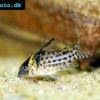 Agassizii’s
Agassizii’s  Spotted
Spotted  Skunk
Skunk  Corydoras
Corydoras 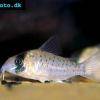 Fairy
Fairy  Corydoras
Corydoras  Pink
Pink 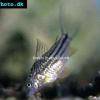 San
San  Bond’s
Bond’s  Spotted
Spotted  Tailspot
Tailspot  Concolor
Concolor  Cope’s
Cope’s 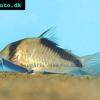 Sand’s
Sand’s  False
False  False
False 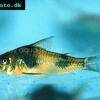 Ehrhardt’s
Ehrhardt’s  Elegant
Elegant 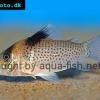 Saddle
Saddle  Fowler’s
Fowler’s  Gomezi
Gomezi 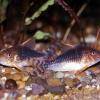 Palespotted
Palespotted 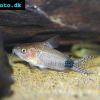 Guapore
Guapore  Dainty
Dainty  Mosaic
Mosaic  Imitator
Imitator  Julii
Julii  Leopard
Leopard 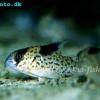 Black
Black  Slant-bar
Slant-bar  Bluespotted
Bluespotted  False
False  Bandit
Bandit  Mini
Mini 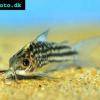 Napo
Napo  Corydoras
Corydoras 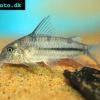 Blue
Blue  Nijssen’s
Nijssen’s 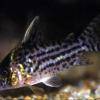 Ornate
Ornate  Peppered
Peppered  Panda
Panda  Albertini
Albertini  Pastaza
Pastaza  Corydoras
Corydoras  Many-spotted
Many-spotted  Pretty
Pretty  Dwarf
Dwarf  Iridescent
Iridescent  Reticulated
Reticulated 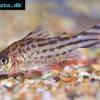 Bannertail
Bannertail  Robust
Robust  Schwartz’s
Schwartz’s  Black
Black 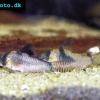 Longnosed
Longnosed  Seuss’
Seuss’  Smudge
Smudge  Masquerade
Masquerade 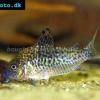 False
False  Millenium
Millenium  Pinkthroat
Pinkthroat  Sterba’s
Sterba’s  Longsnout
Longsnout  False
False 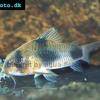 Twosaddle
Twosaddle  Xingu
Xingu 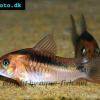 Black
Black  Porthole
Porthole  Flagtail
Flagtail  Brown
Brown  Spotted
Spotted